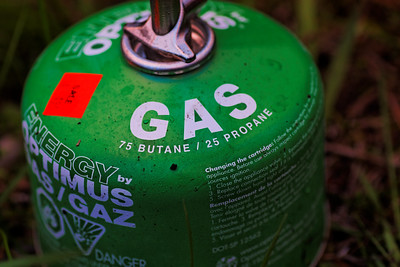
Yes, butane does evaporate when exposed to air. Butane is a volatile hydrocarbon gas at room temperature and atmospheric pressure. When it’s exposed to the air, its molecules gain enough energy to break the intermolecular forces holding them together, causing the butane to transition from a liquid to a gaseous state through the process of evaporation. This is why butane is commonly used as a fuel in lighters and portable stoves, where it can easily evaporate and burn to produce a flame.
The evaporation of butane, like any other substance, occurs due to the kinetic energy of the molecules. As the temperature increases, the molecules move more vigorously, and some of them acquire enough energy to break free from the liquid phase and enter the gaseous phase. This process continues until an equilibrium is reached between the number of molecules evaporating and the number of molecules condensing back into the liquid.
It’s important to note that the rate of evaporation can be influenced by several factors:
- Temperature: Higher temperatures increase the kinetic energy of molecules, leading to faster evaporation.
- Surface Area: A larger surface area of the liquid butane exposed to the air allows for more molecules to escape and evaporate.
- Airflow: Air circulation can carry away the evaporating molecules, facilitating the process.
Pressure: Butane’s evaporation can be affected by pressure changes. At lower pressures, the boiling point of butane decreases, making it easier for the liquid to evaporate.
However, it’s essential to handle butane with caution when it’s in its gaseous form. Butane is highly flammable, and its vapor can form explosive mixtures with air at certain concentrations. Proper ventilation and safety measures are crucial when working with butane to prevent accidents or fires.
The Evaporation Process
A. Explanation of Evaporation as a Phase Transition
Evaporation is a natural physical process where a liquid substance transforms into a gaseous state due to the energy gained by its molecules. In the case of butane, which is a volatile hydrocarbon gas, this transition from the liquid to the gaseous phase occurs when its molecules acquire enough kinetic energy to break free from the attractive forces that hold them together in the liquid state. As these molecules escape into the surrounding environment, they form vapor molecules in the air.
B. Factors Influencing the Rate of Evaporation
The rate at which butane evaporates when exposed to air is influenced by several key factors that affect the energy of the molecules and the conditions of their surroundings:
- Temperature and Kinetic Energy of Molecules
Temperature plays a crucial role in the evaporation process. As the temperature increases, the molecules in the liquid gain more kinetic energy. This increased energy makes them move more rapidly, increasing the likelihood of molecules having sufficient energy to overcome the intermolecular forces and transition to the gaseous state. Hence, higher temperatures accelerate the rate of evaporation.
- Surface Area and Exposure to Air
The surface area of the liquid butane exposed to the air directly affects the rate of evaporation. A larger surface area allows more molecules to be in contact with the air, providing more opportunities for them to escape the liquid phase and enter the gaseous phase. This is why liquids spread out into thin layers when exposed to air, as it maximizes the chances of evaporation.
- Airflow and Ventilation
Airflow and ventilation play a role in carrying away the vapor molecules that are formed during evaporation. If there is stagnant air around the liquid butane, the concentration of vapor molecules may build up near the surface, slowing down the overall evaporation process. Adequate airflow helps maintain a concentration gradient, allowing vapor molecules to dissipate and fresh air to replace them, thus promoting faster evaporation.
- Pressure Changes and Boiling Point Variations
The pressure of the environment can also impact the rate of evaporation. When pressure decreases, such as at higher altitudes, the boiling point of butane also decreases. This means that at lower pressures, butane can evaporate more readily, even at lower temperatures. Conversely, at higher pressures, the boiling point is higher, requiring more energy to transition to the gaseous phase.
Understanding these factors helps elucidate how butane evaporates when exposed to air. The combination of temperature, surface area, airflow, and pressure conditions determines the pace at which butane molecules break free from the liquid phase and become vapor molecules in the air. This knowledge is valuable for various applications where butane’s evaporation properties are essential, such as in fuel-based devices and industrial processes.
Read also: Does Butane Evaporate Completely? (Affecting Factors)
Applications of Butane Evaporation
The evaporation properties of butane make it an essential component in various applications across industries. Its ability to transition from a liquid to a gaseous state when exposed to air has led to its use in several practical contexts.
A. Lighters and Ignition Devices
One of the most common applications of butane evaporation is in lighters and ignition devices. In a typical lighter, a small reservoir contains liquid butane. When the user depresses the button to release gas, the butane evaporates rapidly due to its volatile nature. The evaporation process is essential for producing a flammable gas that, when ignited by a spark, creates a controlled flame for lighting cigarettes, candles, or other items.
The ability of butane to evaporate and form a flammable mixture with air allows for easy ignition and combustion, making it a convenient choice for portable ignition devices.
B. Portable Stoves and Camping Equipment
Another practical application of butane’s evaporation is in portable stoves and camping equipment. Butane-powered camping stoves utilize the rapid evaporation of liquid butane to generate a combustible gas that can be ignited for cooking or heating purposes. These stoves are compact and convenient for outdoor activities, as they rely on the controlled release and evaporation of butane to produce a consistent flame for cooking in remote locations.
Due to its high energy density and efficient evaporation characteristics, butane provides a valuable energy source for outdoor enthusiasts, travelers, and emergency situations.
C. Industrial Processes and Fuel Applications
Beyond consumer products, butane’s evaporation properties find application in various industrial processes and fuel applications. In industries such as chemical manufacturing, butane’s ability to evaporate quickly at specific temperatures is utilized for tasks like solvent extraction and as a feedstock in the production of other chemicals.
Butane is also used as a fuel in some vehicles and engines. In certain applications, it can be blended with other hydrocarbons to create fuel mixtures that can be efficiently burned to generate power.
Read also: Does Butane Explode Under Pressure? (At What PSI?)
The Flammability
A. Explaining the Flammable Characteristics of Butane-Air Mixtures
The flammable nature of butane arises from its ability to form explosive mixtures with air. When butane vapor is present in the air at specific concentrations, it can create a mixture that, when ignited, generates a rapid combustion process. This combustion releases energy in the form of heat and light, producing flames.
The flammability of butane vapor depends on factors like the concentration of butane in the air and the presence of an ignition source. Understanding these characteristics is crucial for ensuring safe handling and use of butane in various applications.
B. Dangers of Explosive Mixtures and Potential Hazards
While butane’s flammability has practical uses, it also presents potential hazards if not managed properly. The formation of explosive butane-air mixtures means that care must be taken to prevent accidental ignition in confined spaces or areas with poor ventilation. Leaking butane vapor can accumulate and create a volatile environment that is prone to ignition.
Safety precautions, such as proper ventilation, leak detection, and storage practices, are essential when working with butane to minimize the risk of accidents and fires.
Conclusion
In conclusion, the evaporation of butane when exposed to air is a fundamental process that underlies a range of applications, from everyday consumer products like lighters to specialized equipment for cooking and industrial processes. Butane’s unique properties as a volatile hydrocarbon gas make it a versatile choice for various contexts, where controlled evaporation, flammability considerations, and energy density play important roles. Understanding the science behind butane’s evaporation enriches our knowledge of its behavior, promoting safer and more effective utilization in diverse fields.

Mike is an experienced propane technician with over 15 years of professional experience in the field. He has dedicated his career to helping customers with their propane needs, from installation to maintenance and repair. Together with Jeremy, he co-founded this website to provide useful information and guidance to customers seeking reliable propane services.




